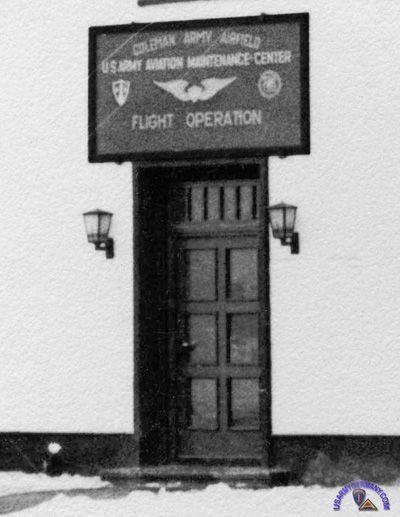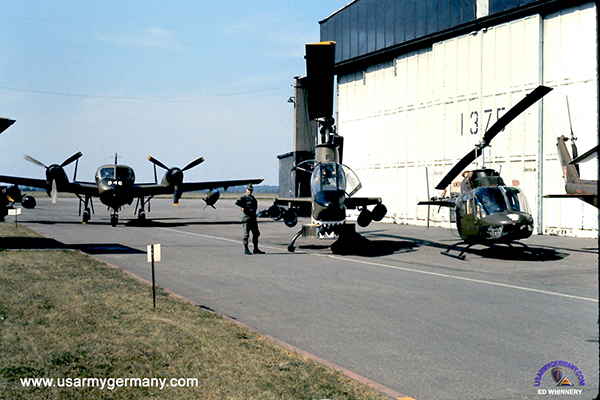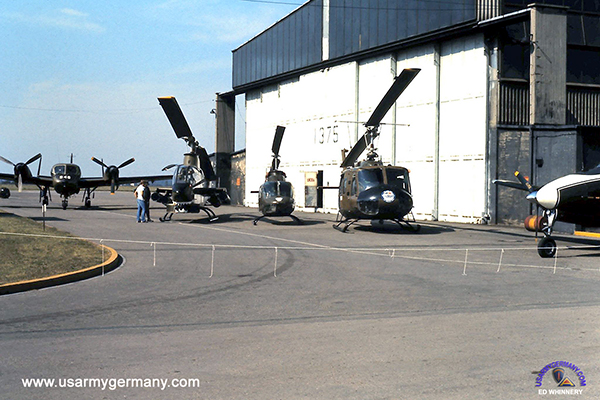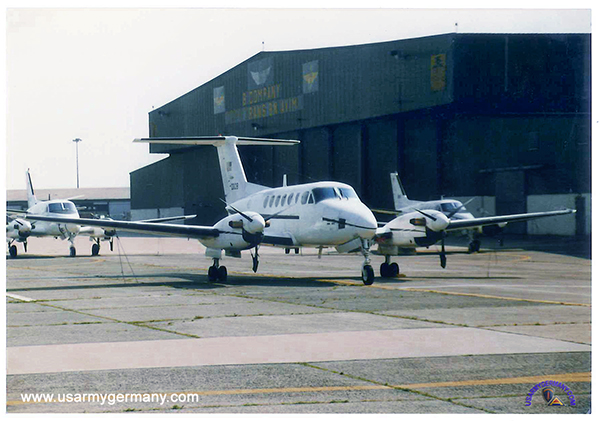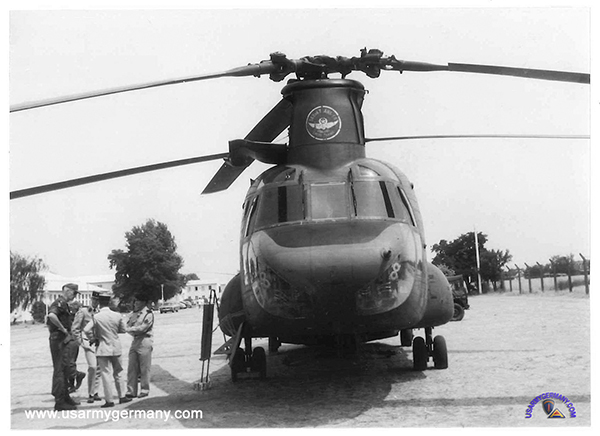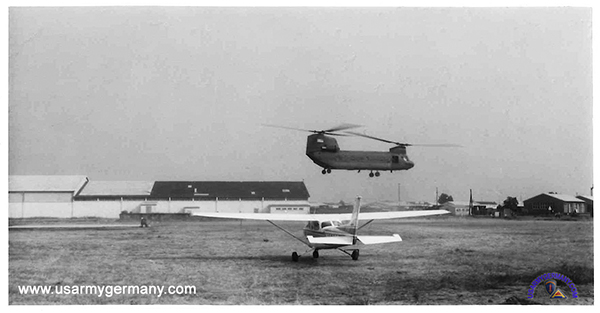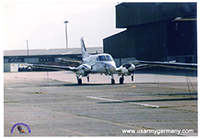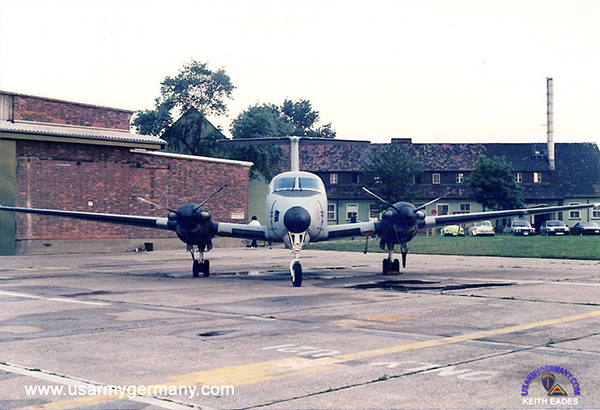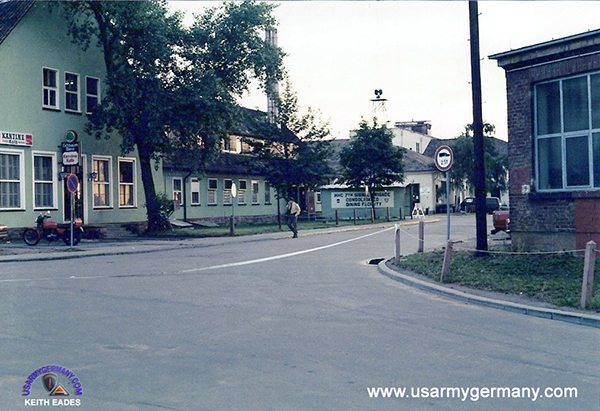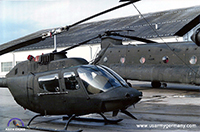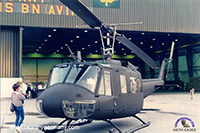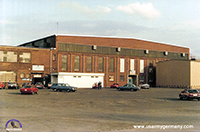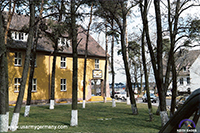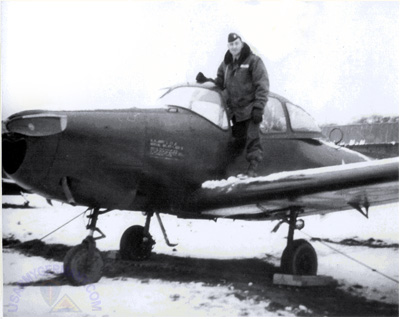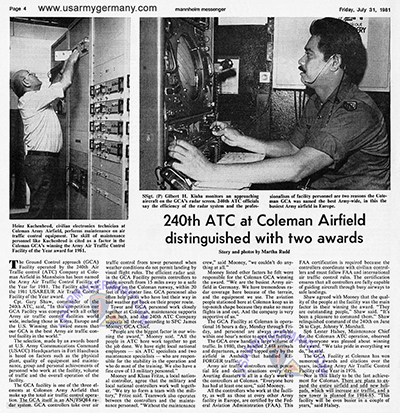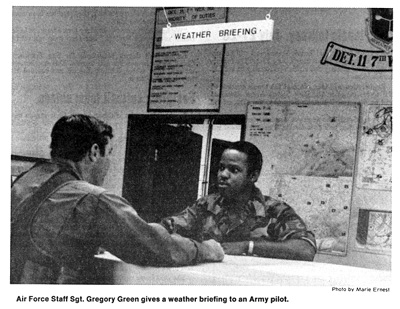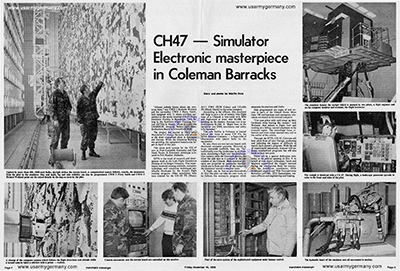| If you do
NOT see the Table of Contents frame to the left of this page, then
Click here to open 'USArmyGermany' frameset |
||||
|
Coleman Army Airfield, Sandhofen |
||||
|
|
||||
|
||||
|
|
||||
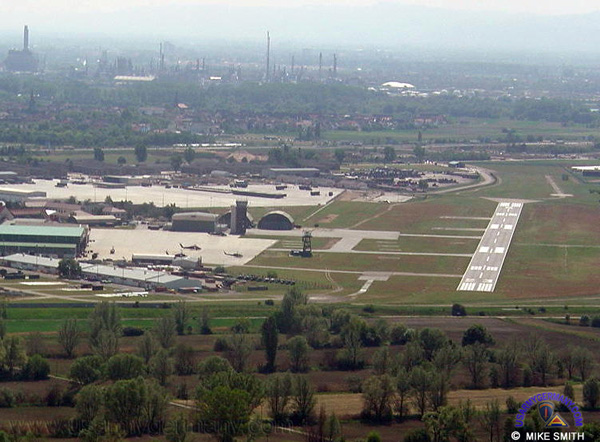 Coleman AAF, Sandhofen, 1990s (Mike Smith) |
||||
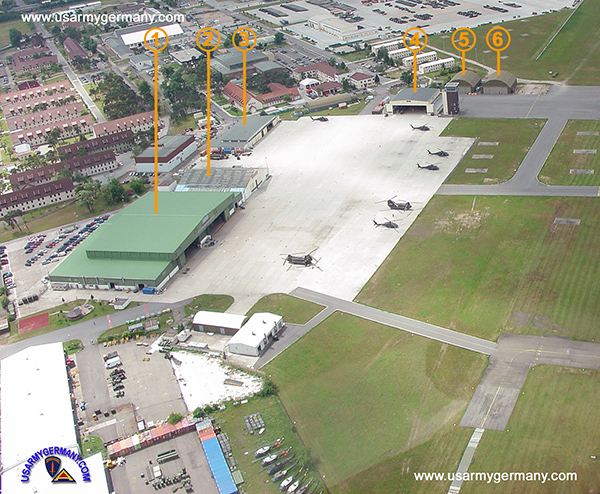 Which units used the above hangars at Coleman AAF (photo 1990s)? If you have information on which units used any of these hangars, please contact the webmaster. |
||||
| History | ||||
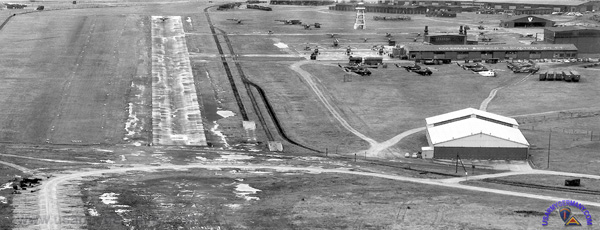 Coleman AAF, Sandhofen - date unknown (Alain Dailloux) |
||||
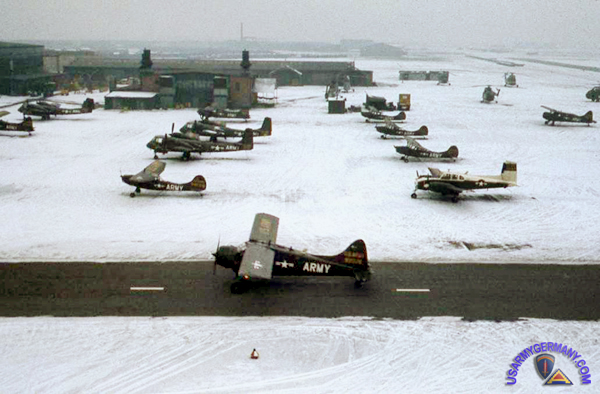 Coleman AAF, 1962 (Michael von Aschberg) |
||||
| 1963 | ||||
| (Source: STARS & STRIPES, May 7, 1963) | ||||
| Coleman Army Airfield is the busiest Army airfield in USAREUR. Army aircraft from units in Germany, France, Italy and from military advisory assistance groups (MAAGs) in Greece, Turkey, Iran, Pakistan, India, Ethiopia and the Congo fly into the airfield for depot-level repairs at the Army Aviation Maintenance Center (located at Coleman). The airfield's Air Traffic Control Section handles up to 150 aircraft each day, over 3,500 a month. Each plane or helicopter landing at or taking off from the airfield is handled separately by the ATC section. In addition, aircraft passing though the airfield's control zone must be cleared by the section to avoid possible collisions with other airplanes or helicopters operating in the area. Coleman Airfield GCA (ground control approach) handles as many as 500 of the 3,500 aircraft every month. This section guides aircraft during landings at the airfield during bad weather or when fog (or smog) envelopes the airfield. |
||||
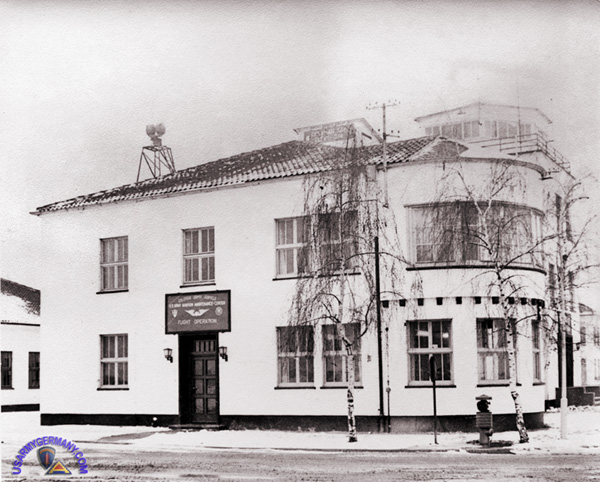 Flight Operations, Army Avn Maint Cen, 1962 (Michael von Aschberg) |
||||
| (Source: STARS & STRIPES, May 22, 1963) | ||||
Army Aviation Maintenance Center |
||||
|
||||
| 1960 | ||||
| (Source: Email from Joe Masterson) | ||||
| I received your web page from a friend in my search for information. I was stationed at Coleman from June 1970 to June 1971. I was a GCA Radar Repairman assigned to the Radar at the Air Field. I guess I'm getting old because I can not remember the Unit Designation at that time. If you could help with that information I would greatly appreciate it. The radar was an AN/FPN-40 Fixed Navigational Radar. It was painted Orange and White and was installed off the side of the runway next to the railroad tracks. There were two orange and white trailers that housed the radar equipment and other storage. There was also room for a small support shop included. It was staffed by German and American Military Radar Controllers and the maintenance and repair of the radar was done by American Military. I recently joined the HONOR GUARD in eastern Tennessee. We provide the necessary people for Full Military Funerals in our area. I am in the process of re-constructing my old Dress Uniform for this assignment. I am at a loss for recalling the unit designation and the unit patch that I wore during my tour at Coleman. If you have any information please send it to me. |
||||
| 1971 | ||||
| 1980s | ||||
|
||||
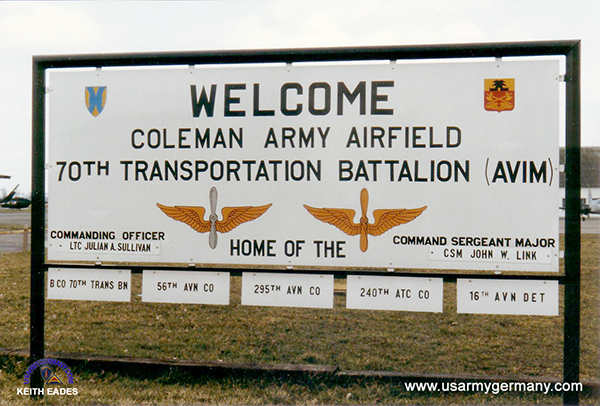 Sign at entrance to Coleman AAF, Sandhofen, mid-1980s (Keith Eades) |
||||
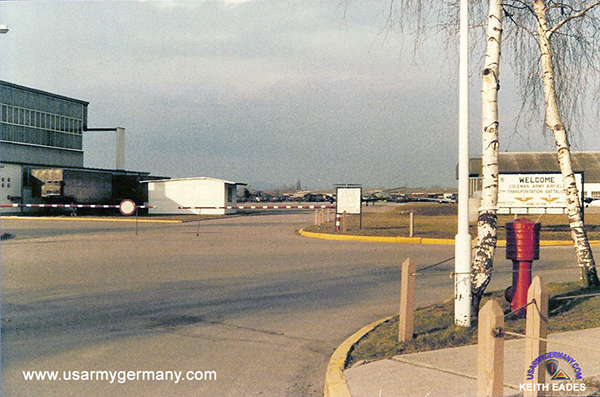 Entrance to the airfield at Coleman Barracks, Sandhofen (Keith Eades) |
||||
| 1985 | ||||
| (Source: Keith Eades, 295th Aviation (Cyclones) Mannheim, Germany - CH-47 Chinook FB) | ||||
| I was stationed at Coleman Barracks from Jan 1985 - May 1987 and assigned to the 295th Aviation Company as a Crew Chief / Flight Engineer. | ||||
|
||||
| To see more photos submitted by Keith on the 11th Aviation Battalion Page, click here. | ||||
| 45th Transportation Army Aviation Maintenance Company | ||||
| Frescaty Army Airfield, Metz, France | ||||
| 1952 | ||||
| (Source: Email from Edward Landry, 45th OLAM, 1952-54) | ||||
| I joined the 45th Ord Light Avn Maint Company (OLAM) at Fort Bragg NC, in the spring of 1951, fresh from Fort Sill. as a newly minted Army Aviator, as well as an AF Liaison Pilot. The 45th OLAM, commanded by Captain Frank O Perry was assigned to a Fort Bragg Ordnance Bn. I was assigned as the Executive Officer. The company was alerted for a USAREUR assignment during the summer and we trained in the old Balloon Hanger area in the vicinity of Pope AFB.. The company consisted of about 93 aviation personnel at the time, most of which had significant experience in aviation field maintenance. Ordnance POM staff personnel told us that we were training for a very important aviation mission in USAREUR. During the winter of 1951 I took the Advance Party of the company, consisting of 4 senior NCOs’, to USAREUR to arrange for the arrival of the main body in the spring of 1952. Upon arrival, the company was assigned to an Ordnance Bn. in Germany, but with duty station at the USAREUR Advanced Communications Zone Command (ADSEC) in Verdun, France. At that time, ADSEC was commanded by Brigadier General W. W. Ford, one of the early founders of Army Aviation and known then as the “Father of Army Aviation.” |
||||
|
||||
| The Frescaty Airfield was a NATO airfield under construction and consisted of a single runway and taxiways suitable for a squadron of French Air Force Mystere fighter jets. Vertical construction on the American assigned side of the airfield consisted of a dilapidated warehouse and separate hangar where a small detachment of U. S. Army personnel were maintaining 21 L-5 aircraft in flyable storage as the USAREUR war reserve. The company pitched tents in a field adjacent to the airfield and took on the mission of maintaining the war reserve aircraft and improving the hangar and warehouse facilities sufficient to conduct aviation field and general support maintenance. Company moral immediately soared. Additional personnel were assigned to include the commander of the detachment, Lt. Ned McCord, Lt. Ray Cumb and two second liutenants, Lendrum and Forester. Shortly thereafter the 45th OLAM assumed a USAREUR aviation general support role, providing back up support for the 93rd OLAM in Echterdingen and the 30th OLAM in Hoppstätten, Germany. During this period the USAF provided Army Aviation depot maintenance and supply support from their depot in Chateauroux, France. The 45th OLAM interfaced with the USAF Chateauroux depot and early on established a 45 day level of aviation spare parts at Frescaty from which the 93rd and 30th OLAM sister companies drew their 30 day level of spares. As the hangar facility became viable, the 45th OLAM began line hauling boxed H-13 model helicopters from the USAF Chateauroux Depot facility to Frescaty where they were assembled, test flown and issued to the 93rd and 30th OLAM companies for subsequent distribution to 7th Army units. More than 35 H-13 model helicopters were assembled during the period and the crates the helicopters came in were modified and became general support maintenance service facilities alongside the hangar. During this same time period, responsibility for Army Aviation logistics transferred from the US Army Ordnance Corps to the US Army Transportation Corps and the company and its sister companies in Germany became US Army Transportation Army Aircraft Maintenance Companies (TAAMs). During the 1953-1954 period, the company provided general support maintenance for aircraft and components that were beyond the capability of the 93rd and 30th TAAM companies. During this same period, all the USAREUR war reserve L-5 aircraft were replaced with new L-19 model aircraft. The older L-5s were flown to Erding AB in Germany by company personnel, where they were disassembled and subsequently returned to CONUS. Twenty one new L-19 aircraft consisting of the USAREUR war reserve were received and maintained in flyable storage at the Frescaty airfield facility until late 1954 when they were flown by company personnel to a small airfield at Laroche-Sur Yon in southern France. During the 1953-54 time period the 45 th TAAM personnel, in conjunction with the USAREUR Headquarters Logistics Division, established a contract with Sabena Aircraft Corporation at Brussels to provide depot maintenance for all the old war-weary L-17 model aircraft in USAREUR. USAREUR. L-17s from Germany and Austria were flown to the 45th TAAM where they were prepared for a one-time flight to Brussels. These aircraft then received a complete overhaul known as the Depot Inspection Record (DIR) , and the aircraft were restored to “like new” condition. This is probably one of the last contracts of its type as shortly thereafter USAF and U.S Army depot maintenance policy was changed to the “Inspect, Repair, Only as Necessary" (IROAN) concept. Approximately 25 L-17 aircraft were inducted into this program. I left the 45th TAAM in the fall of 1954 and I understand that shortly thereafter the unit was relocated to Sandhofen, Germany where it became part of the USAREUR Army Aviation Depot as it was subsequently known. I had the good fortune to be subsequently assigned to the U.S. Army Transportation Command in St. Louis commanded by Gen. Bill Bunker. This command became the nucleus of the first U. S. Army Aviation Logistics Command and free from the USAF yoke for logistics support. At the attachment is yours truly and one of the war weary L-17s inducted into the DIR program. |
||||
| Coleman Army Airfield, Sandhofen, Germany | ||||
| 1955 | ||||
| (Source: Email from John Mueller) | ||||
I have searched for info on this unit (45th TAAM Company) that I was stationed with from the Fall of 1953 until Jan of 1955.
We were stationed in Metz, on its outskirts.
I believe they called the airstrip Frescaty. |
||||
| 240th Air Traffic Control Company | ||||
| 1981 | ||||
| (Source: Mannheim Messenger, July 31, 1981) | ||||
| The 240th Air Traffic Control Company at Coleman Army Airfield was named the Army ATC Facility of the Year for 1981 as well as winning the USAREUR ATC Facility of the Year award. | ||||
| Detachment 11, 7th Weather Squadron (USAFE) | ||||
| 1985 | ||||
| (Source: Messenger, July 26, 1985) | ||||
| Army pilots depend on AF at Coleman By Marie Emest Within the midst of Army motorpools, an airfield, and a dining facility at Coleman Barracks, lies a rather small but efficiently operated weather station - the U.S. Air Force 7th Weather Squadron, Detachment 11. Although it is not the first instance of integrating two branches of service, the 12 airmen assigned there are sometimes overlooked because of the small size of their detachment. Nevertheless, they have secured an important role in the smooth operation of neighboring Army units. Pilots of the aviation units and air traffic controllers depend on them for the condition of the skies. Ignoring their minority status at Coleman, the Air Force servicemen are faithful to their designated duties. More than 20 years ago, Detachment 11 was established at Coleman. Their basic purpose is the same as that of any weather service - to provide environmental and meteorological support to the Army, Air Force and all other agencies as directed by the Department of Defense. The first weather service was established by Congress as part of the Army Signal Corps in 1870. When the Air Force became a separate service in 1947, Air Weather Service went along with it. There are 15 weather detachments and 12 operating locations that provide a weather support to Army units in Germany. Heidelberg has 24-hour operationis thought to be the largest such detachment working alongside the Army. Other examples are in Illesheim and Fulda. Partnership with Army The airmen in Detachment 11 seem to enjoy their partnership with the Army. "Army assignments are a fact of life for the people in Air Weather Service;" says Tech. Sgt. James Foster, station chief. "This is my second assignment with the Army. The experience has been different. Most of us have met lifetime friends among Army soldiers." |
||||
|
||||
| CH-47C Flight Simulator | ||||
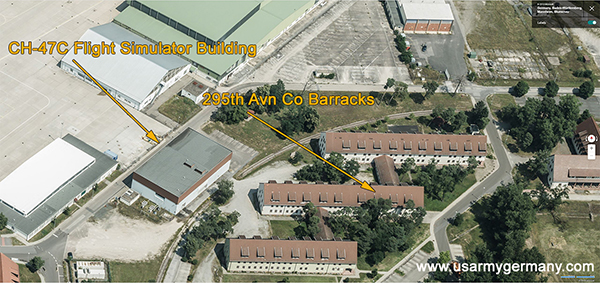 Location of the CH-47C Flight Simulator on Coleman AAF (BING) |
||||
| 1982 | ||||
| (Source: Mannheim Messenger, Nov 19 & Dec 31, 1982) | ||||
| The CH-47C Flight Simulator at Coleman AAF, officially dedicated in a ribbon-cutting ceremony at the airfield on Dec 9, 1982, was the first CH-47 simulator in Europe, and only the third in the entire world. | ||||
| Related Links: |
||||

